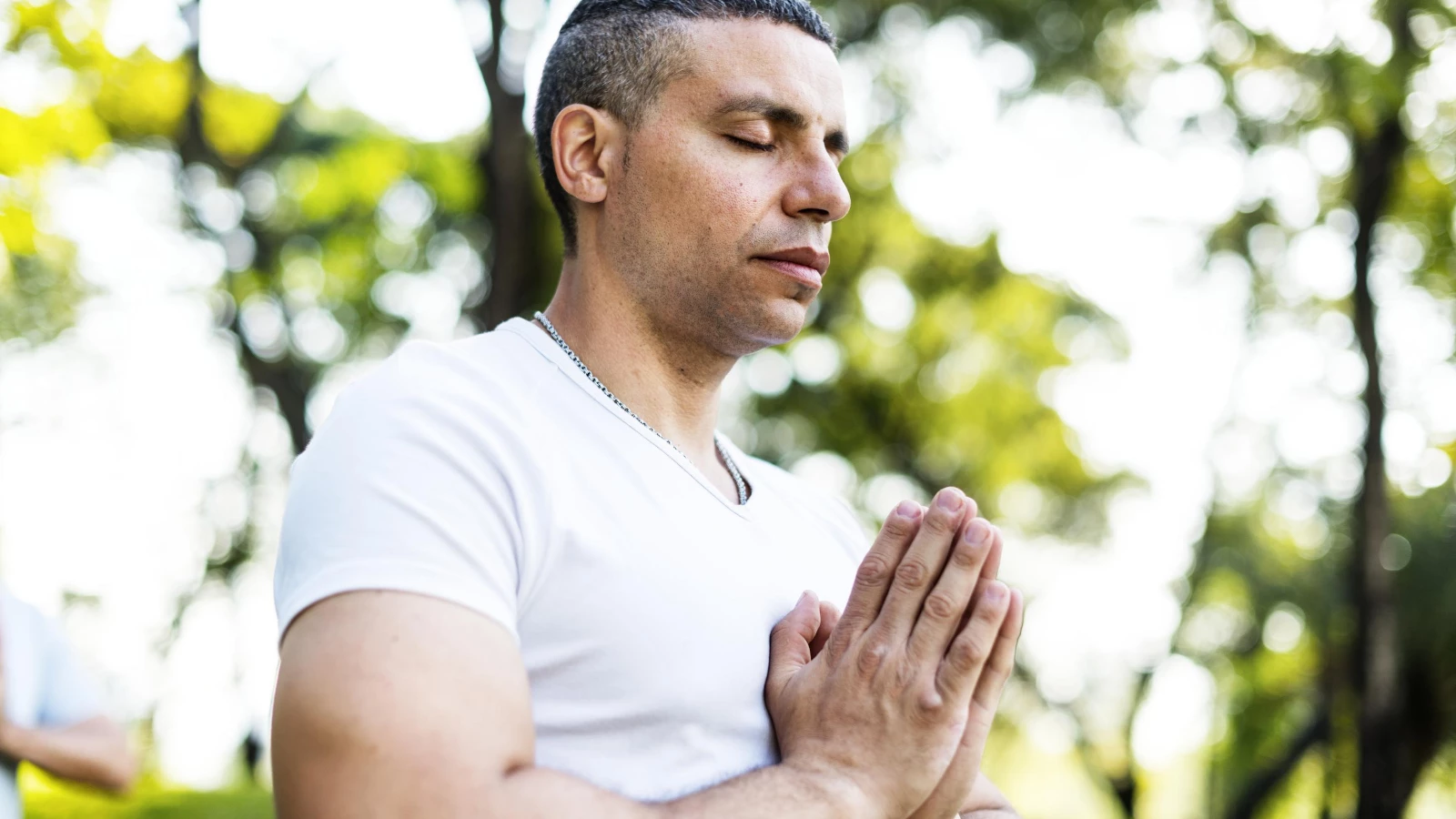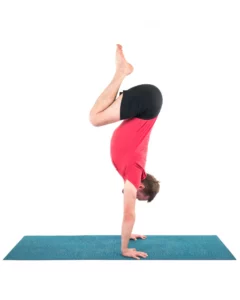A Natural Choice: How Mindfulness Can Help You Manage Pain—without Drugs

Pain is defined as “an unpleasant sensory and emotional experience associated with actual or potential tissue damage” and serves as the body’s inherent protective mechanism to:
- Motivate the individual to pull out from a damaging situation and prevent further damage to the tissue
- Allow the damaged tissue to rest and begin the healing process.
- Avoid similar encounters
Thus, pain in a true sense is beneficial when, for example, your back sustains a blow, and the injured tissues need care and protection. Individuals who suffer from congenital insensitivity to the pain response are easily injured, and most of them die at an early age.
The phenomenon of pain is generally transient and recedes when the stimulus is removed, or the damaged tissue has healed. However, there are certain abnormal pathological conditions where the pain is a constant feature and persists for a long time. This is chronic pain that lasts beyond the expected period of healing.
The Body’s Response to Chronic Pain

Unfortunately, chronic pain brings with it other health issues, including constant fear, worry, anxiety, depression, and memory deficits. Furthermore, when these pain signals traverse through certain areas of the brain, they stimulate a set of autonomic responses resulting in increased heart rate and blood pressure, rapid breathing, and sweating. It is unclear if chronic pain triggers these comorbidities or vice versa.
The entire process—starting from the initial stimulus to the actual pain response and the waning of the pain—involves several specialized receptors, neurochemicals, and transmission of the pain information through specialized channels. The end result is that the damaged area gets flooded by natural opioid-like compounds that have an immediate analgesic effect, making painful accidents much more tolerable.
The body’s system of pain control for injuries involves the release of natural opioid compounds, such as enkephalins and endorphins, that bind receptors in the spinal cord to suppress the transmission of pain signals to the brain. But the body cannot produce enough natural opioids to stop severe or chronic pain, nor can it produce enough to cause an overdose. Thus, severe or chronic pain will require the incorporation of exogenous opioids.
Opioids, Pain Relief, and Addiction
Exogenous opioids are substances that act on the body’s own opioid receptors to produce analgesic/numbing effects and hence are primarily used for pain relief, including anesthesia. Opioids are indicated for the relief of mild to severe pain and are effective for the treatment of acute pain (such as pain following surgery). For immediate relief of moderate to severe acute pain, opioids are frequently the treatment of choice due to their rapid onset, efficacy, and reduced risk of dependence.
Opioids are also prescribed in palliative care to help with the severe, chronic, disabling pain that may occur in some terminal conditions, such as cancer, and degenerative conditions, such as rheumatoid arthritis and fibromyalgia. This practice has now led to a new and growing problem with addiction and misuse of opioids. It is estimated that an average of 125 deaths from opioid overdoses occurs per day in the United States.
Between July 2016 and September 2017, hospitalizations from opioid overdoses jumped 30 percent nationwide. Data strongly suggest that the rapid rise in opioid addiction, overdose, and death in the last 20 years is largely driven by the increase in the prescription of synthetic opioids for pain. As the crisis worsens, pain management options are desperately needed that don’t involve opioids.
Benefits of Yoga and Mindfulness Practice in Managing Pain

The good news is that there are several studies that report the benefits of yoga in curbing pain. In addition to asanas, meditation also improves pain as the individual starts to relax. Research studies show that meditation techniques, including breath awareness, mantra repetition, and visualization, can actually improve pain tolerance. Thanks to Jon Kabat-Zinn’s pioneering work in the 1980s, when he developed Mindfulness-Based Stress Reduction (MBSR), mindfulness meditation has now demonstrated promise for managing chronic pain.
Mindfulness meditation has been shown in clinical trials to reduce chronic pain significantly. Accomplished meditators can reduce it by over 90 percent. An article published a year ago, “Mindfulness Meditation for Chronic Pain: Systematic-Review and Meta-analysis,” found that mindfulness meditation is associated with a decrease in chronic pain compared to all types of controls in 30 randomized trials. (1) Furthermore, mindfulness meditation in pain patients showed promising outcomes on chronic pain-associated health issues, including mood disturbance, anxiety, and depression. These studies conclude that a natural therapeutic approach for chronic pain management, such as mindfulness meditation, would likely be welcomed by patients suffering from acute/chronic pain.
The predominant question among researchers is how mindfulness curbs the pain response physiologically. Imaging studies show that mindfulness soothes the brain patterns underlying pain and, over time, these changes take root and alter the structure of the brain itself, so that patients no longer feel pain with the same intensity. Mindfulness pacifies the neural circuits that amplify the pain stimulus. In effect, mindfulness turns down the pain intensity.
In addition, mindfulness was more effective at reducing pain-associated inflammatory response that again brings down pain intensity. As the pain ebbs, any anxiety, stress, and/or depression that the individual experiences begins to melt away, the body relaxes, and healing gradually takes over. Recent studies provide further evidence that mindfulness meditation engages mechanisms that are distinct from the opioid and placebo pathways to reduce pain. (2) This is critically important to the millions of patients that are seeking a non-opioid pain therapy!
Also, read...
Wrist Pain During Yoga? 4 Tricks to Eliminate Discomfort
Yoga for Neck Health: Exploring Brahma Mudra
Carpal Tunnel Syndrome: A Yoga Sequence to Soothe Sore Wrists
Related courses
Breath as Medicine: Yogic Breathing for Vital Aging
Yoga and Myofascial Release: Releasing Chronic Tension with the Bodymind Ballwork Method

Rammohan (Ram) Rao comes from a family of Ayurvedic practitioners and Vedic teachers in India tracing back to the illustrious Vedic-acharya Rishi Kaundinya (although Ram admits he cannot do the Eka pada or Dwi pada Kaundinyasana). With a doctorate in Neuroscience, Ram was a Research Associate Professor at the Buck Institute for Research on Aging. He focused on various aspects of age-associated neurodegenerative diseases with an emphasis on Alzheimer’s disease. In addition, Ram completed the academic training at the California College of Ayurveda (CCA) and received his certification as a Clinical Ayurvedic Specialist. He has been a faculty member of the California College of Ayurveda and teaches in their Nevada City location. Ram is also a dedicated Hatha yoga practitioner and is a Registered Yoga Teacher from Yoga Alliance USA. In his spare time, he offers consultations in YAMP techniques (Yoga, Ayurveda, Meditation & Pranayama). Ram has published several articles in major Yoga/Ayurveda magazines and has been a featured speaker in several national and international meetings and symposia. He is a member of the National Ayurvedic Medical Association (NAMA) and is on the Research Board of the Association of Ayurvedic Professionals of North America (AAPNA).
- https://www.ncbi.nlm.nih.gov/pmc/articles/PMC5368208/
- https://www.ncbi.nlm.nih.gov/pmc/articles/PMC4941786/



